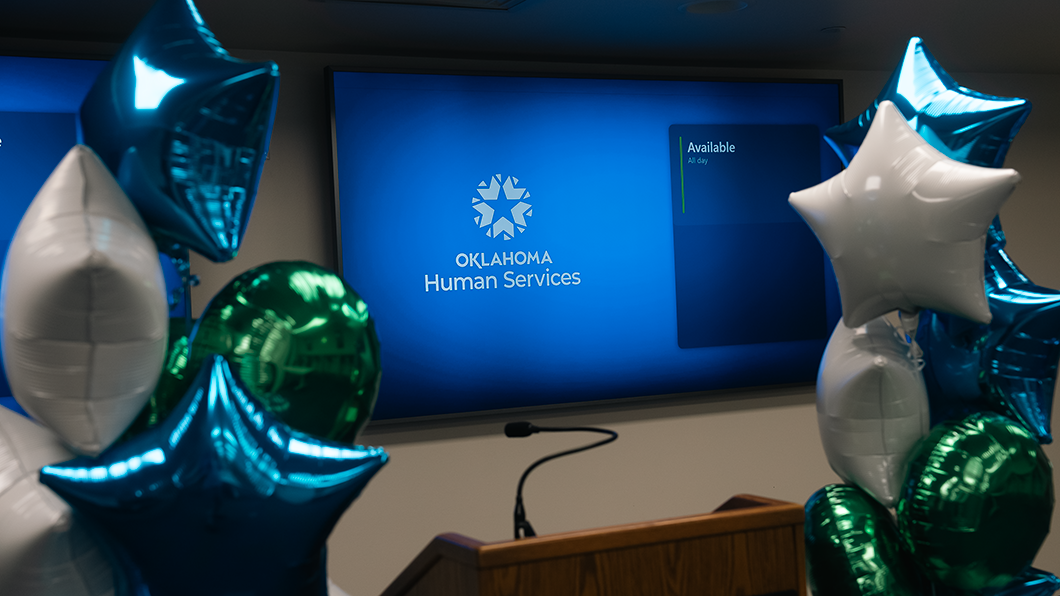A little over two years ago, Oklahoma Human Services Adult and Family Services (AFS) began a program improvement initiative and, in doing so, took a significant step towards transforming their safety-net operations for the better. Since then, AFS has improved their completion, utilization, and employee attendance rates; reduced their average wait time for applications and renewals; and provided timely, quality service to over 4 million Oklahoma families while eliminating their backlog in entirety. What moves made this level of transformation possible for Oklahoma?
Background: Challenges During a Time of Change
At the beginning of 2022, AFS faced a number of challenges and hurdles. They struggled with delays in decision-making processes and lengthy customer wait times, and they needed more visibility and control over workload management. AFS sought to improve both operational efficiency and customer satisfaction, and they sought to do this while navigating significant organizational changes. During this time, AFS was not only restructuring their organization but also expanding their use of the CXone phone platform and implementing a new document repository system, OnBase. These initiatives were intended to enhance communication and provide quicker access to information, but they also wound up adding complexity to AFS operations and organizational restructuring.
Process Redesign Plus Technology Upgrade: A Recipe for Success
In June of 2022, AFS partnered with Change & Innovation Agency (C!A®) to improve work management and service delivery while navigating the changes described above. The project was spearheaded by Sondra Shelby, Director of Adult and Family Services at Oklahoma Human Services. Under her leadership, the C!A team collaborated closely with AFS to implement both business process redesign (BPR) and a tailor-made technology solution – the pairing of BPR and technology was critical to the success of this project.
1. Business Process Redesign, the Shared Workload Model, and First-Contact Resolution
C!A first carried out a comprehensive BPR for three critical services: the Supplemental Nutrition Assistance Program (SNAP); Aged, Blind, and Disabled (ABD) Medical; and Child Care. This redesign involved developing standardized procedures, streamlining business processes, and introducing a statewide shared workload model. Under a shared workload model, tasks and cases can be shared across programs and counties to improve efficiency and increase access to customer service.
During the redesign, AFS staff also shifted their focus from touching as many applications as possible to serving one family at a time through the access points that work best for the family, with the goal of first-contact resolution whenever possible. This new approach significantly improved both customer access and first-contact resolution rates, offering full services via phone, in-person, and online – and even some services on wheels. One of the changes that had a strong impact, for example, was allowing customers to complete the interview process at their convenience, eliminating the need for scheduled appointments.
2. Current™ Work Management Solution and a Workload Management Team
To further enhance operational efficiency and support BPR efforts for AFS, C!A implemented Current™, our statewide workload management tool. Our teams tailored Current to monitor and manage the diverse services provided by AFS within the shared workload model. We also helped establish a dedicated workload management team, consisting of a workload manager and seven coordinators. This work was designed to ensure effective service delivery across all access points throughout the State and was crucial to AFS achieving and sustaining a shared workload model.
3. The STAR Initiative, Plus Legacy and OnBase Work
Early on in the project, AFS saw substantial benefits and sought to extend these benefits to additional programs, which they referred to as the Service, Technology, Advancement, and Renovation initiative – or STAR initiative. C!A provided development support for the implementation of the STAR initiative, which involved one project manager and five programmers. Working together, C!A and AFS teams integrated additional programs and tasks into Current and made data-driven improvements to Phase I operations. By November 2024, Temporary Assistance for Needy Families (TANF), Long-Term Care (LTC), and Refugee Assistance programs had all been transitioned to the Current™ platform and new work model.
Results: Two Years of Transforming Adult and Family Services
Through the implementation of Current™ and the adoption of their new STAR business model, AFS has gained unprecedented access to real-time data, reporting, and workflow oversight. This visibility has allowed the agency to better understand their workload distribution, to adopt a shared workload model, and to allocate resources more effectively so more families can be served. After two years of operating in the new model, AFS has served over 4 million families faster, more accurately, and with improved service quality, including:
- 2.2 million served through non-lobby methods (phone, email, online service)
- 957,000 served through agency lobbies
- 801,000 served on the Oklahoma 5050 virtual office phone line
- Thousands served through virtual and LTC/TANF lobbies
Additional project results include:
- Completion Rate: Now ranges from 79% to 83%
- Employee Attendance: Improved from 61% to 82%
- Utilization: Reached 85%
- Logged-In Time: Increased to 87%
- Average Wait Time for Applications/Renewals: Reduced to under 7 days
- Backlog: Completely eliminated
More than Numbers: Oklahoma is Helping People and Families
The collaboration between Oklahoma Human Services AFS and C!A demonstrates the power of strategic partnerships and innovative solutions. By embracing change and implementing targeted strategies that leverage both process redesign and technology solutions, AFS not only overcame its immediate challenges but also set a new standard for efficiency and customer service in state agencies. As Director Sondra Shelby put it, “These numbers are impressive, but they only tell part of the story. Behind every data point is a person; someone whose life was impacted by your [AFS staff’s] care, professionalism, and persistence.”
As time goes on, AFS continues to build momentum and see positive results, and the people and families in Oklahoma continue to benefit from faster services, a flexible variety of communication channels, and staff who have more time to focus on them – the people agencies are dedicated to serving – when it most counts.
To Learn More:







